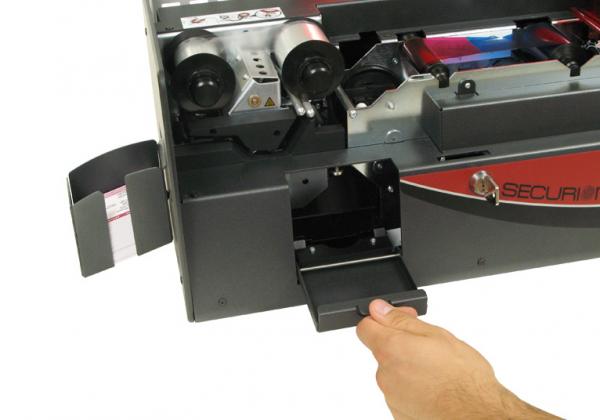What's the Difference Between Overlays and Laminates?

During your research into an ID card printing system, you may have come across overlays and laminates that can be added to cards for extra protection and another layer of security. While you might think these terms can be used interchangeably, we’d like to set the record straight. There are some distinct differences between the two functions.
Overlays are Printed
An overlay is an extra panel in your printer ribbon, sometimes called the “O” panel, that’s a thin, clear top coat automatically applied to your ID cards during printing. An overlay protects what you’ve printed on your cards from friction wear, scratches, and the harmful effects of UV sunlight like fading.
What an overlay can provide:
- A thin layer of protection for your printed text and graphics or images on each card.
- The use of standard PVC cards because there’s no additional heat used to print an overlay.
What an overlay can’t provide:
- Extra durability against abrasion to extend the life of your ID cards. They only protect the printed material on the card, not the card itself.
Laminates are Heat Treated
A laminate is a clear protective layer of film that comes in a separate cartridge and is applied thermally during the printing process. It covers the top of a printed card to prolong its life by sealing the surface against abrasion, exposure to chemicals, and the elements. You can choose laminates in a variety of thicknesses depending on your needs.
What laminates can do:
- Enhance the lifespan of your ID cards by protecting them from wear and tear and abrasions.
- Work exceedingly well for high-use cards that are swiped through readers often during the day.
- Can come with holographic designs embedded that add an extra layer of security to your cards.
- Prevent someone from producing counterfeit cards or tampering with them.
What laminates don’t do:
- Can’t be provided by a standard ID card printer as they require a special laminating module.
- Can’t be used with standard PVC cards; they require composite PET cards because of the heat used to apply them during printing.
Summary
Overlays are a thin treatment that can protect your ID cards from sunlight fading, while laminates are thicker protection that protects both your printed material and the card itself. Both laminates and overlays protect what you print on your ID cards from heat or other elements and also prevent it from sticking to the plastic of an ID holder. Depending on how your ID cards are going to be used, overlays and laminates can help you provide extra protection and even security that you won’t get with a standard solution. This also helps in reducing the added cost of replacing cards due to wear and tear over time.
The IDSecurityOnline Difference
Each ID card printing system offered by IDSecurityOnline has options for adding overlays or a laminating module. If you decide that your ID cards would be better off with added protection, our experts can help you determine if an overlay or a laminate would meet your needs. We’ll help you weigh the costs of each option against the enhancements you’ll get, like prolonged lifespan, to arrive at a solution that meets your ID security needs and your budget.
Call one of our experts today to discuss your ID security requirements. You’ll be happy to learn that we strive to exceed your expectations with first-class customer support and service, free shipping, and a price match guarantee.



